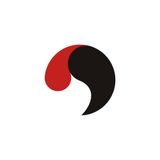What is a Decentralized Autonomous Organization (DAO)?

You've probably seen the term DAO thrown around quite a bit lately. But what exactly is a DAO, how does it work, and why is it being touted as a transformative technology? This article breaks down the DAO concept into an easy-to-digest introduction.
Definition of a DAO
A DAO stands for “Decentralized Autonomous Organization.” In simple terms, a DAO is an entity that allows different parties to come together and collaborate toward shared goals and objectives. A DAO aims to decentralize decision making and administration, as well as reduce or eliminate centralized points of control or failure.
Instead of using traditional management hierarchies or legal entity structures, a DAO’s governance and operation happen through smart contracts recorded on a blockchain. This allows a DAO to function autonomously based on immutable, self-enforcing agreements, with control and responsibility distributed across members.
In essence, a DAO is a new kind of organization that is created, run, and owned collectively by its network participants. It is based on open, transparent interactions enabled by blockchain technology.
Voting Rights and Participation
Participation in a DAO happens through ownership of its governance tokens. Token holders can then use their votes to enact meaningful changes. There are typically two key parts to membership and participation in a DAO’s governance:
- Voting on governance proposals to determine protocol changes or allocate funds from the DAO treasury to specific initiatives. This could include anything from changing how new tokens are distributed, to allocating money for hiring new talent or launching new products.
- Submitting new proposals for a vote. Any active member can put forth new ideas for the DAO to consider. If enough members agree with the proposal, it can move forward for further discussion or a final vote. This is where day-to-day decisions are crowdsourced from those most involved.
In fact, votes on proposals are the main way forward change happens in a DAO. Proposals need to achieve quorum among voting membership before becoming active.
Code-Based Administration and Identity
A DAO’s existence is defined by smart contracts that power voting and administrative functions. Instead of using legal documents, organizational schemas and paper trails for verification, a DAO’s operations are hard-coded into auditable software.
Every rule, from ownership rights to distribution of funds, is defined and controlled through code, with the full record visible to all members through the distributed ledger of the host blockchain. This automation creates trusted interactions without paper documentation, costly oversight, or management hierarchies.
In addition, while members’ real-world identities may remain unknown, each member has an address linked to votes and assets owned on the blockchain. This pseudo-anonymous yet verifiable approach allows diverse, globalized membership without compromise.
Key Benefits and Advantages
So why use a DAO instead of traditional structures? Some key benefits for members and participants include:
- Democratic Ownership and Control – Rather than rigid management hierarchies, each member has voting rights and the ability to shape a DAO’s direction. Power lies in the hands of those creating value.
- Transparency & Trust – Operations, assets and proposals are visible through auditable software, boosting accountability while reducing corruption.
- Resilience Through Distribution – Without centralized points of control or failure, DAOs are resilient. As long as some members remain, the DAO survives.
- Global Operation – DAOs facilitate borderless operations, attracting top international talent unbound by geography or residency.
There are also reasons why certain enterprises may evolve into DAO models over legacy structures. For example, media outlets turning into community-owned co-ops, charities operating transparently through code rather than paperwork, or artists forming fan-governed record labels owned collectively by listeners themselves. The possibilities are wide and expanding.
Risks and Challenges to Consider
Of course, as with any new concept, DAOs also come with certain challenges and attack vectors. Some key areas of concern include:
- Dependence on Code – Despite advances in security, smart contract vulnerabilities remain a threat all DAO developers must plan for.
- Low Voter Turnout – Without good incentives and processes, voter turnout can stay low, hampering governance scaling. Solutions like token-weighted voting and delegate structures are emerging to meet the need.
- Conflicts of Vision – With no overarching authority, conflicts around values or ideas for the future can split DAOs if not managed collaboratively. Strong communication norms are key.
- Uncertain Regulations – Laws surrounding DAOs remain complex and variable across regions. Regulatory uncertainty persists, but policymaker education and international cooperation around crypto-native models will help mature laws.
Despite these growing pains, the foundational principles of decentralization, autonomy, and member ownership at the core of well-designed DAOs make them a compelling evolution in how globally-coordinated enterprises can operate.
Broader Adoption on the Horizon
Right now DAOs are gaining traction across areas as diverse as media production, software development, investment funds, charitable causes and the arts:
- MakerDAO – One of the earliest operational examples that maintains stability of the DAI decentralized stablecoin through smart contract controlled monetary policy.
- DXdao – Governs a portfolio of blockchain products and crypto assets through collective ownership by token holders.
- ConstitutionDAO – A distributed investor collective that raised $47M to bid on a rare copy of the U.S. Constitution at auction before being outbid.
Other examples you find in our comprehensive list of DAOs.
Moving forward, expect to see more mainstream enterprises consider hybrid models combining DAO independence with useful aspects of legacy structures. Regulation will also continue maturing to provide stability.
The Bottom Line
DAOs represent a fundamental shift in how globally coordinated enterprises can operate – leaning into the strengths of decentralized participation and automation. While still an emerging paradigm, active experimentation underway across industries points toward stable futures where transparency, collective ownership and democratic control create collaborative organizations unlike anything possible before now. Pay attention as this develops!





